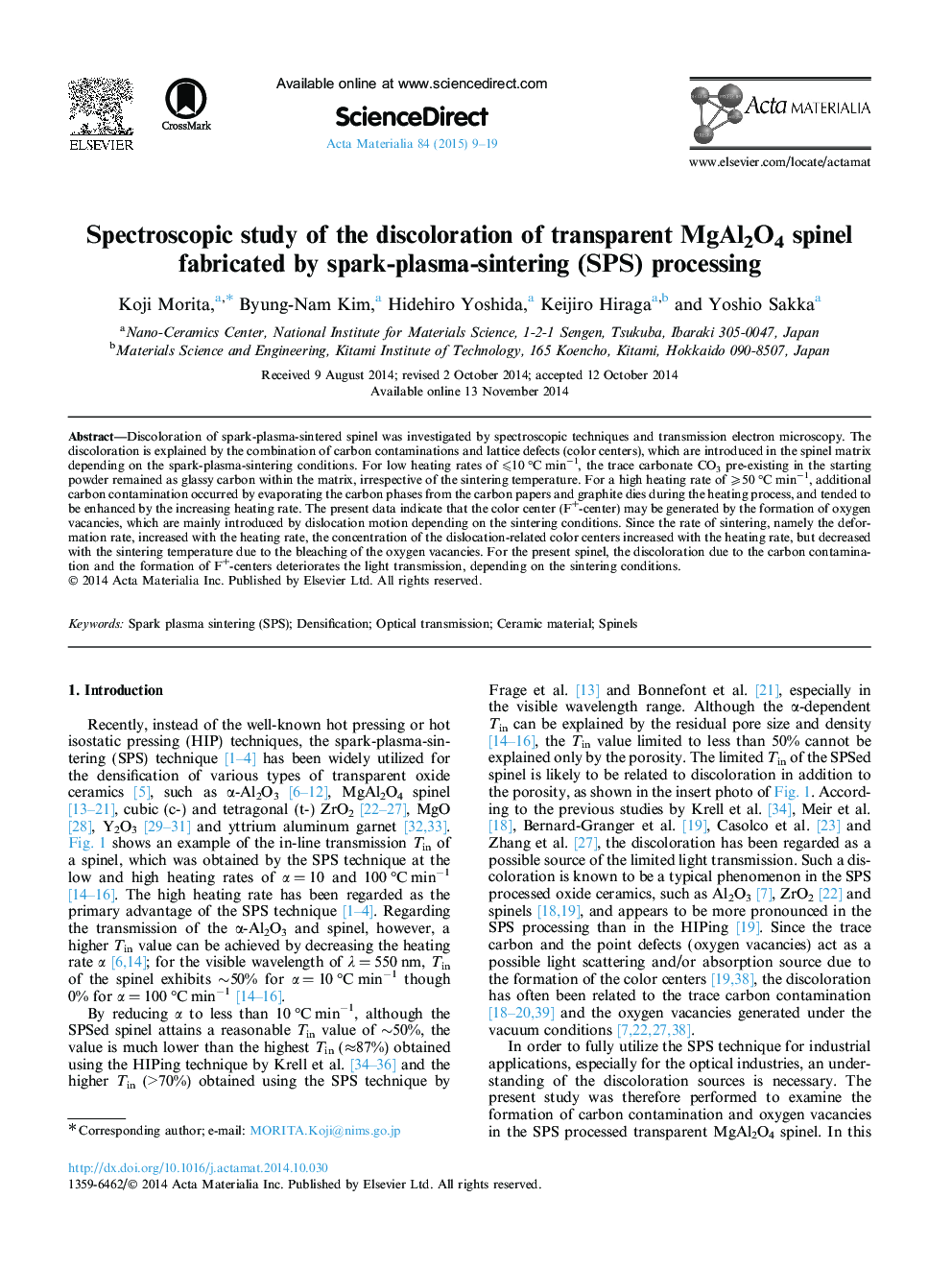| Article ID | Journal | Published Year | Pages | File Type |
|---|---|---|---|---|
| 1445412 | Acta Materialia | 2015 | 11 Pages |
Discoloration of spark-plasma-sintered spinel was investigated by spectroscopic techniques and transmission electron microscopy. The discoloration is explained by the combination of carbon contaminations and lattice defects (color centers), which are introduced in the spinel matrix depending on the spark-plasma-sintering conditions. For low heating rates of ⩽10 °C min−1, the trace carbonate CO3 pre-existing in the starting powder remained as glassy carbon within the matrix, irrespective of the sintering temperature. For a high heating rate of ⩾50 °C min−1, additional carbon contamination occurred by evaporating the carbon phases from the carbon papers and graphite dies during the heating process, and tended to be enhanced by the increasing heating rate. The present data indicate that the color center (F+-center) may be generated by the formation of oxygen vacancies, which are mainly introduced by dislocation motion depending on the sintering conditions. Since the rate of sintering, namely the deformation rate, increased with the heating rate, the concentration of the dislocation-related color centers increased with the heating rate, but decreased with the sintering temperature due to the bleaching of the oxygen vacancies. For the present spinel, the discoloration due to the carbon contamination and the formation of F+-centers deteriorates the light transmission, depending on the sintering conditions.
